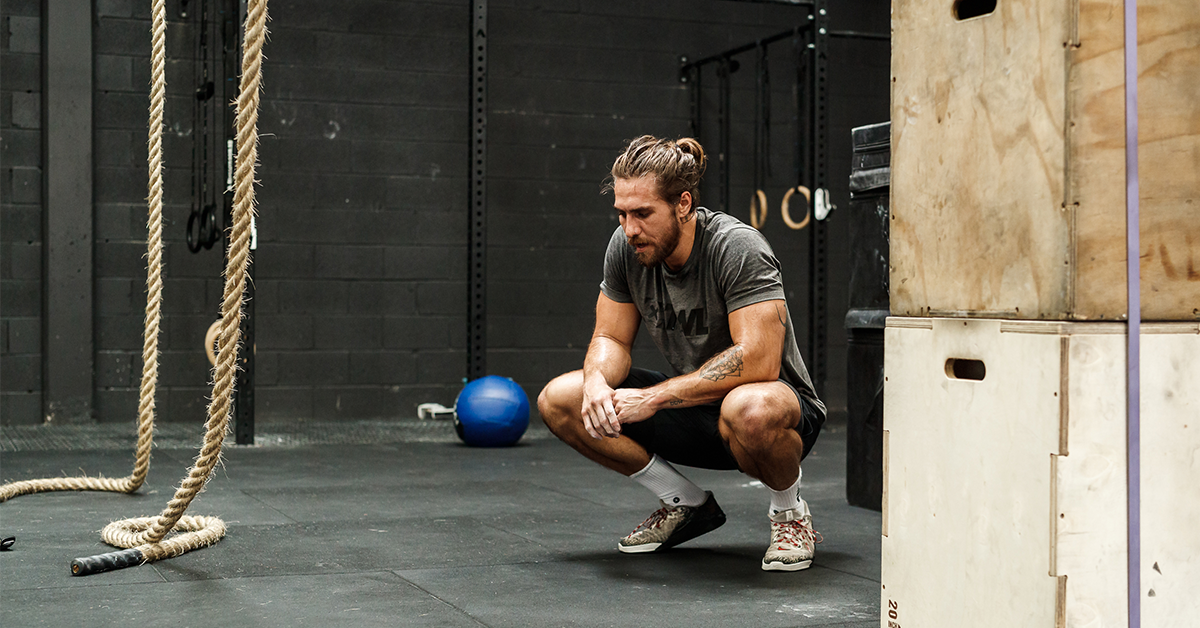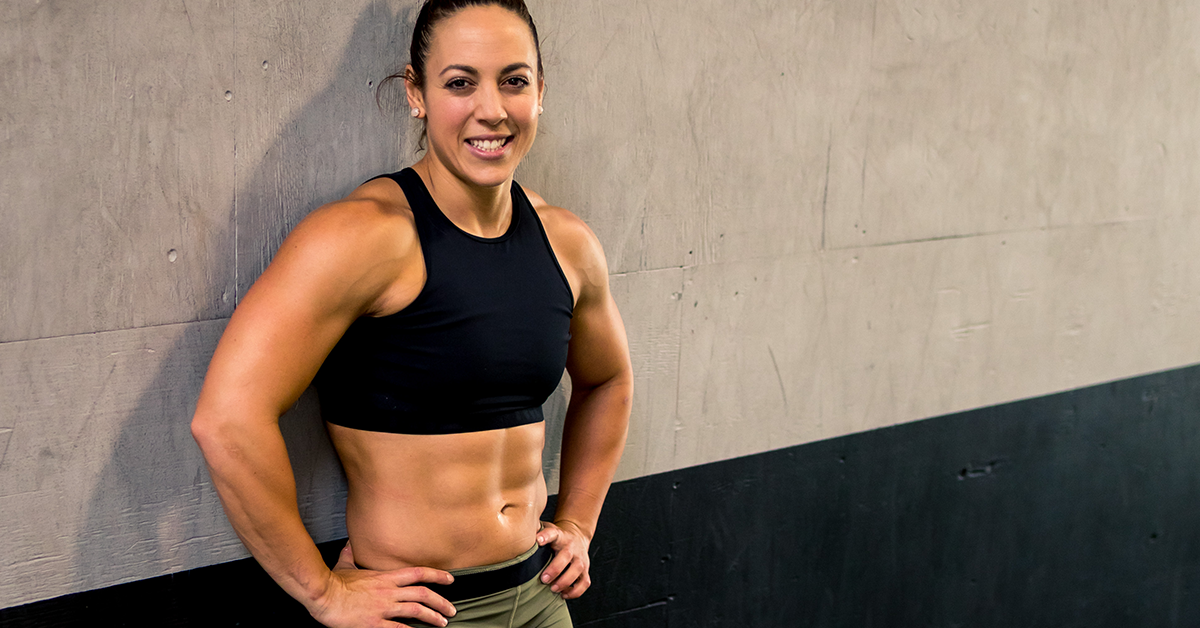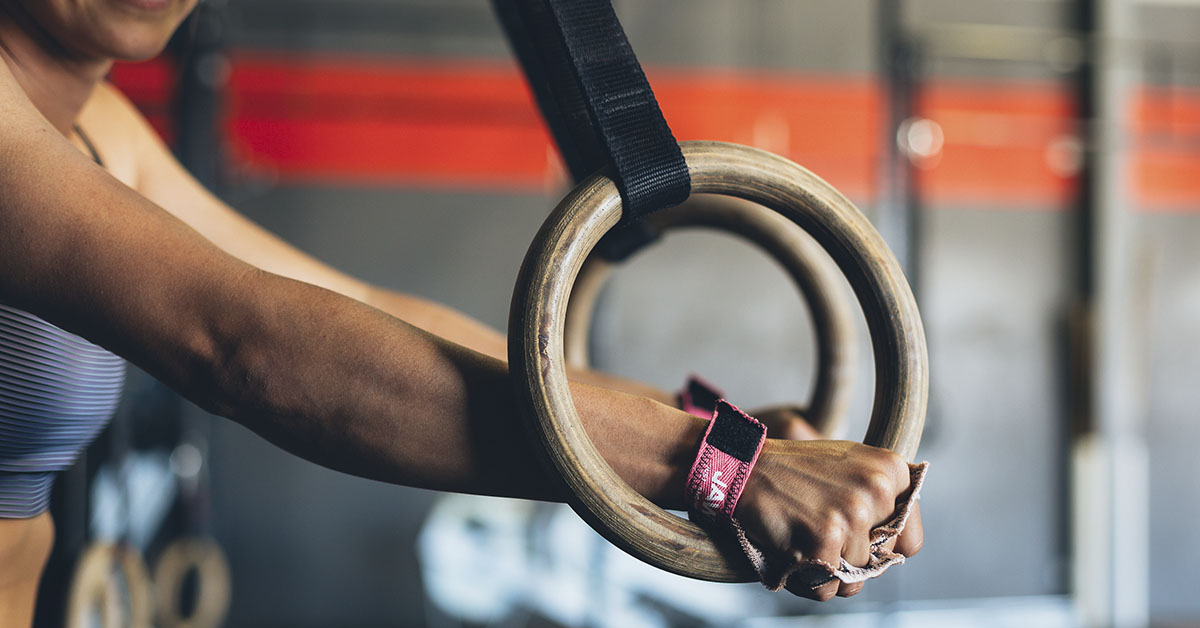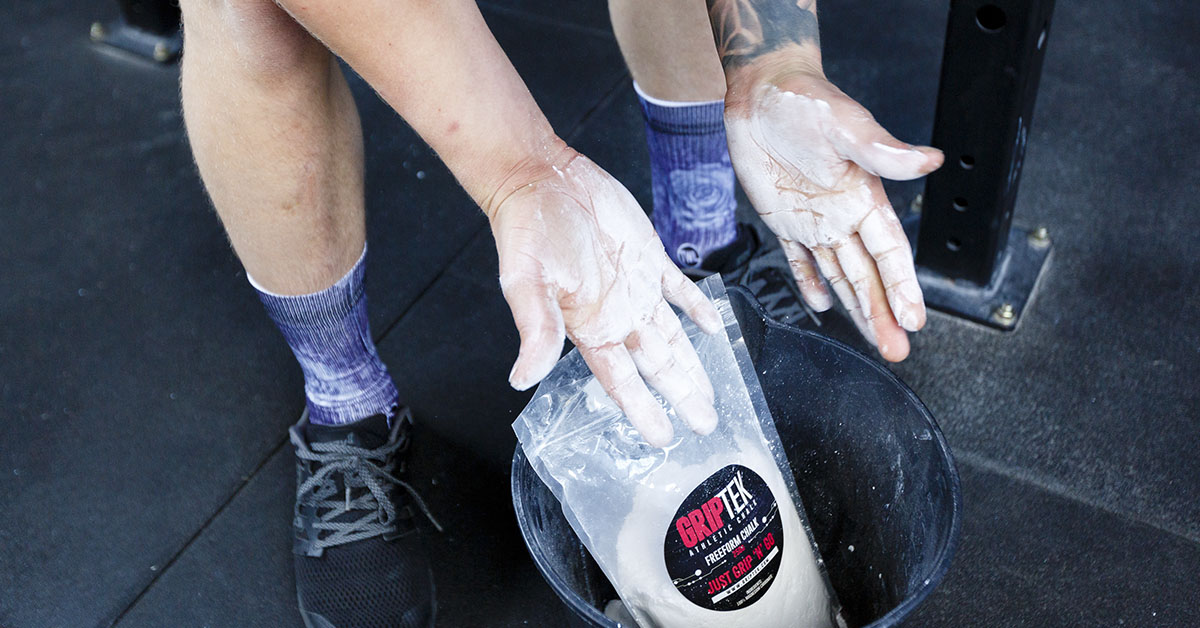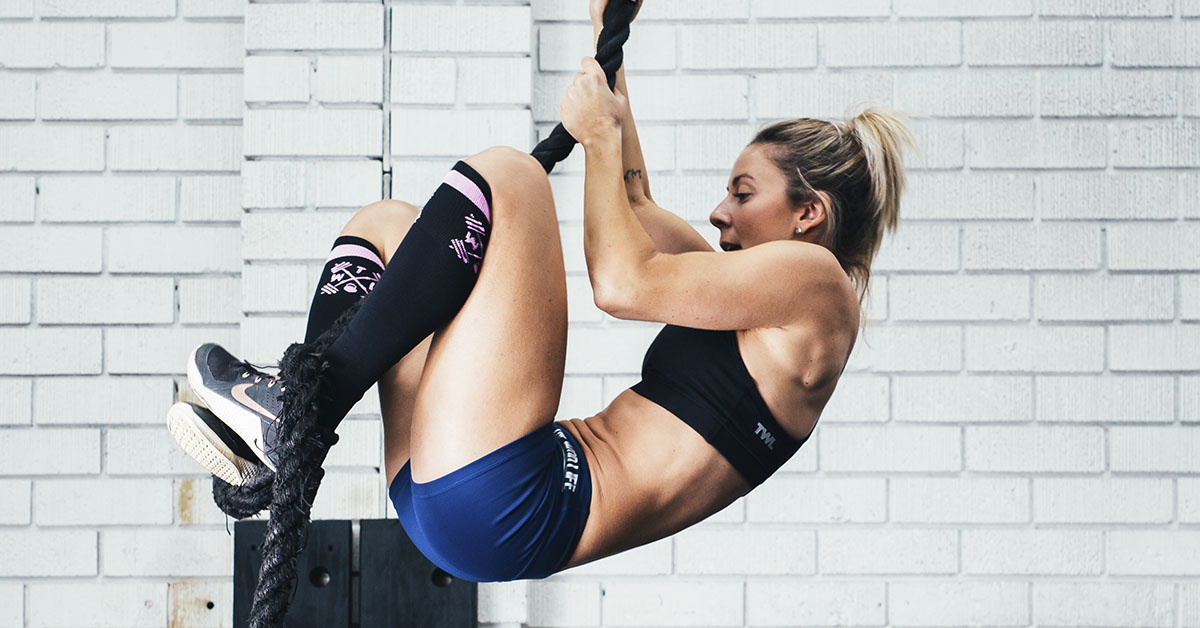“I used to do this as a kid! No problem,” you said, the day your coach told you that you were going to learn how to climb a rope. And then you realized… it’s a lot trickier than you originally anticipated. Wondering the most effective ways of climbing a rope? Need some tips for how to improve your rope climbs? Want to be able to Rx them in your next WOD? Here are some tips and techniques that you can use to begin mastering rope climbs.
How to Climb a Rope: 7 Tips and Tricks to Try
Don’t worry — you’re not alone here: Rope climbs are deceptively challenging. Take these things into consideration.
1. Start Small — Baby Steps!
If you’re learning how to climb a rope for the first time, don’t rush it. Scale the movement down by laying or sitting on the ground with your legs extended, the rope out in front of you. Aim to pull your body off the ground with your feet still on the floor. This helps you begin building strength without having to lift the entire weight of your body just yet.
This scaled version of rope climbs will enable you to start safely and bring confidence while improving your technique and strength. On a similar note…
2. Learn to be comfortable with the rope.
You must be comfortable moving up and down the rope. Squashing that fear is half the battle. In addition to the scaled rope climbs we mentioned in the previous tip, it’s also a good idea to practice simply hanging from the rope. Whether you jump up and grab a hold or step off a box and do it, spend time hanging from the rope without thinking of climbing.
Once you get used to that sensation of hanging above the ground, rope climbs won’t be as scary.
3. Improve your grip strength.
You can’t climb a robe without having a steel grip. There are a number of ways to improve your grip strength. One simple way is towel pull-ups. Wrap one towel on the pull-up bar and, hanging from it, do as many pull-ups as you can. Make sure that you alternate your hands so that each one gets a turn being on top — better mimicking a rope climb.
4. Prioritize your upper body strength.
Upper body strength plays a huge role in rope climbs. Practice pull-ups — or some variation thereof — regularly. This could mean banded pull-ups, box pull-ups, or even ring rows.
Any type of exercise that involves your biceps, shoulders, or upper back will pay dividends. Strict presses, dumbbells rows, and back extensions are all fair game.
View this post on Instagram
5. Perfect Your Foot Holds
This one’s a biggie. Practice different foothold methods to better understand the best technique that works for you. Practice this part by itself by setting up a box six inches from the rope. Stand on the box and grab the rope to practice putting your feet into the most effective and secured position. Here are three different footholds you can try:
- S Wrap – This method is the most secure way of rope climbing. Wrap your one leg 360 degrees around the rope. Place your opposite foot on top of the base foot, clamping the rope between your feet. This approach will be the slowest since you have to rewrap your foot until you reach the top, but it’s a secured way of climbing since the rope is locked around your whole leg.
- Fast J Wrap – This method guides the rope down by making a J shape on your leg while the other foot is acting as a side clamp to hold the rope in place. You will need to lean back and bring your feet as close to your hands as possible. Place your one foot outside of the rope while the other feeds it up on top. Then, step on that foot to lock it. Stand on the rope and let it go entirely from your feet, and then bend and regrip. This approach has the least amount of friction and is the fastest technique for a foothold. Watch out though, because this method requires a lot of upper body and grip strength.
- Secure J Wrap — This is also known as the Goldie Lock because it’s secure and fast and is a combination of the S and Fast J Wrap. Wrap your leg 3/4 around the rope, making it feed down between the legs, and wrap it behind the calf of the other foot. Use a partial S Wrap technique at the beginning by placing your calf against the rope. Then, your other leg is going to hook the rope. Kick it straight, and then pull.
Here’s one additional tip: When you’re experiencing fatigue, secure a foot lock while hanging. Look down at your feet and remember that you have a “surface” to stand on and rest.
View this post on Instagram
6. Make time for core strength.
You know how climbing a rope involves bringing your knees to your elbows? That’s core strength! Strengthening those muscles will make it easier to get up the rope, faster.
There are countless ways to improve core strength. Hanging knee raises, V-ups, and planks are a great place to start.
7. Don’t forget your lower body.
You can’t have your arms doing all the work during rope climbs. Your lower body is supporting you from below. Something that improves both strength and explosiveness will work in your favor. Think box jumps or jump squats.
The best advice we can give you if you want to learn how to climb a rope? Practice. It’ll take time to not only improve your strength but also get comfortable with your foothold of choice. But once you do, you’ll be climbing ropes like a pro.
Ready to put your skills to the test? Try this rope climb WOD!

